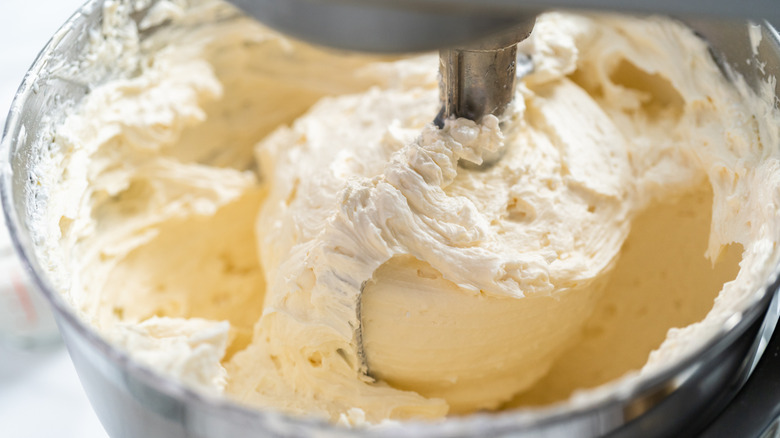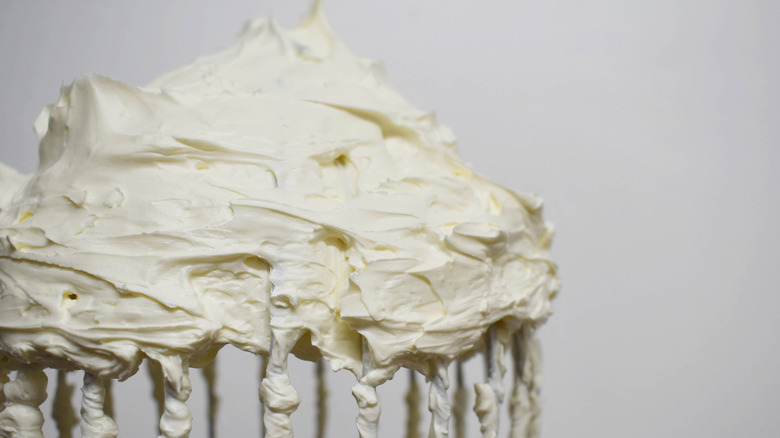Visual Cues You've Properly Creamed Butter And Sugar
To cream, or not to cream, that is the question. When it comes to making any type of cookie, bakers do one of two things: Cream softened butter with sugar, or mix in melted butter. There are good reasons for both methods, depending on your personal preference and the type of cookie you're making.
As brown butter cookies start to make their way into every food blog, the good old creamed butter and sugar cookies seem to grow more and more obsolete. But something creamed butter has over its melted rival is structure and bite. Cookie aficionado and author Jesse Szewczyk says creamed butter cookies are lighter, higher, and fluffier, while melted butter cookies are thinner, chewier, and denser (via King Arthur Baking).
What's more interesting is that a recipe that calls for melted butter only relies on chemical leaveners to provide structure to the cookie, per Szewczyk. Because creamed butter gives your cookies height, structure, and volume, it is very important to cream effectively. This is especially the case for something like buttercream frosting, or any cakey cookie that needs air incorporated into the dough. There are a few things that you should look out for to know you've creamed your butter and sugar sufficiently. Fortunately, there is a way to see when your butter and sugar have reached peak ceaming.
Light and fluffy
Masterclass explains that the secret to creaming butter and sugar is to beat together room-temperature butter with sugar using an electric mixer. You can definitely cream butter and sugar by hand, but it might be a very taxing arm workout. The first visual cue you must look for is a butter that is slightly cool and firm, but easy to indent with your finger, per The Pioneer Woman.
Creaming butter and sugar properly begins with butter that is softened, but not overly softened. Room-temperature butter lies in the perfect sweet spot between cold butter and melted butter -– cold butter steams in the oven and holds layers of dough intact while melted butter is malleable, per Bon Appétit.
Once you know your butter is softened, you cube it into smaller pieces and combine it with sugar. The electric mixer should go on for around five minutes, but what really tells you it's ready is the color and texture. Masterclass explains that butter and sugar begin to combine into a crumbly wet sand, but gradually, the yellow hue of the butter is lightened to an off-white by the high rate of aeration.
The sugar itself almost dissolves into the velvety folds of butter and becomes indistinguishable from the mixture. The texture should be creamy, and stiff peaks should rise when you lift your mixer. The next time a cookie recipe calls for creamed butter and sugar, look out for these visual cues to get a light, cakey crumb or try the reverse-creaming method.

